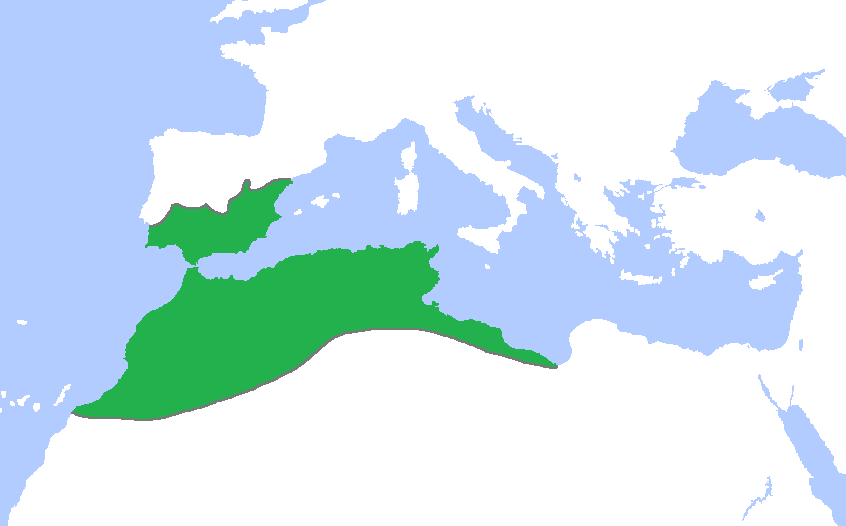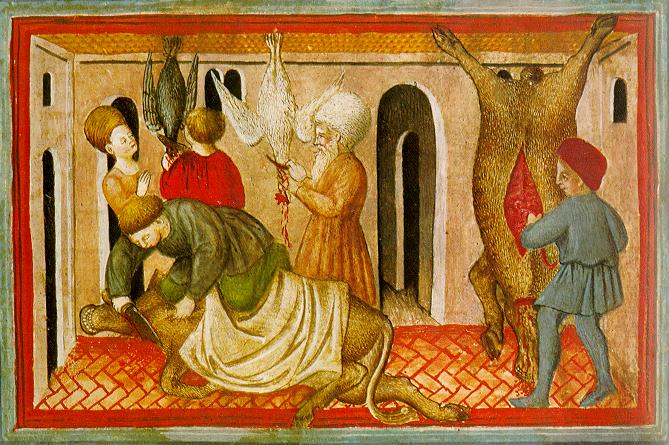|
Yiḥyah Salaḥ
Rabbi Yiḥya Ṣāleḥ (alternative spellings: Yichya Tzalach; Yehiya Saleh), known by the acronym of Maharitz (, ''Moreinu HaRav Yichya Tzalach''), (1713 – 1805), was one of the greatest exponents of Jewish law known to Yemen. He is the author of a liturgical commentary entitled ''Etz Ḥayyim'' (The Tree of Life), in which he follows closely the legal dicta of Maimonides. Rabbi Yiḥya Ṣāleḥ is widely remembered for his ardent work in preserving Yemenite Jewish customs and traditions, which he articulated so well in his many writings, but also for his adopting certain Spanish rites and liturgies that had already become popular in Yemen. In this regard, he was strongly influenced by the Rabbis of his previous generation, Rabbi Yehudah Sa'adi and Rabbi Yihya al-Bashiri. Initially, Rabbi Yiḥya Ṣāleḥ worked as a blacksmith until the age of thirty, after which he worked as a scrivener of sacred texts (Heb. " sofer"),Sa'arath Teiman, pp. 19-24 before becoming chief juris ... [...More Info...] [...Related Items...] OR: [Wikipedia] [Google] [Baidu] |
Maimonides
Moses ben Maimon (1138–1204), commonly known as Maimonides (, ) and also referred to by the Hebrew acronym Rambam (), was a Sephardic rabbi and Jewish philosophy, philosopher who became one of the most prolific and influential Torah scholars of the Middle Ages. In his time, he was also a preeminent astronomer and physician, serving as the personal physician of Saladin. He was born on Passover eve 1138 or 1135, and lived in Córdoba, Spain, Córdoba in al-Andalus (now in Spain) within the Almoravid dynasty, Almoravid Empire until his family was expelled for refusing to convert to Islam. Later, he lived in Morocco and Egypt and worked as a rabbi, physician and philosopher. During his lifetime, most Jews greeted Maimonides' writings on Halakha, Jewish law and Jewish ethics, ethics with acclaim and gratitude, even as far away as Iraq and Yemen. Yet, while Maimonides rose to become the revered head of the History of the Jews in Egypt, Jewish community in Egypt, his writings also ... [...More Info...] [...Related Items...] OR: [Wikipedia] [Google] [Baidu] |
David Abudirham
David Abudarham (fl. 1340) (), referred to as Abu darham, Abudraham, or Avudraham, was a rishon who lived in Seville in the 14th century and was known for his commentary on the siddur. Biography He is said to have been a student of Jacob ben Asher (son of Asher ben Yechiel). This view originates in Chaim Yosef David Azulai's ''Shem Gedolim''. Abudarham gives full citations of authority up to and including Jacob ben Asher. He also mentions that he lived at Asher ben Jehiel's house, and was a "friend" of Jacob ben Asher. He is believed to be the ancestor of Solomon Abudarham (d. 1804), Chief Rabbi of Gibraltar. His work, ''Sefer Abudarham'' Abudarham belonged to the class of writers who, in an age of decline, felt the need of disseminating in popular form the knowledge stored up in various sources of rabbinical literature. His book, popularly known as ''Sefer Abudarham'', has no specific title beyond the name ''Ḥibbur Perush haBerakhot vehaTefillot,'' ("Commentary on ... [...More Info...] [...Related Items...] OR: [Wikipedia] [Google] [Baidu] |
18th-century Yemenite Rabbis
The 18th century lasted from 1 January 1701 (represented by the Roman numerals MDCCI) to 31 December 1800 (MDCCC). During the 18th century, elements of Age of Enlightenment, Enlightenment thinking culminated in the Atlantic Revolutions. Revolutions began to challenge the legitimacy of monarchical and aristocratic power structures. The Industrial Revolution began mid-century, leading to radical changes in Society, human society and the Natural environment, environment. The European colonization of the Americas and other parts of the world intensified and associated mass migrations of people grew in size as part of the Age of Sail. During the century, History of slavery, slave trading expanded across the shores of the Atlantic Ocean, while declining in Russian Empire, Russia and Qing dynasty, China. Western world, Western historians have occasionally defined the 18th century otherwise for the purposes of their work. For example, the "short" 18th century may be defined as 1715� ... [...More Info...] [...Related Items...] OR: [Wikipedia] [Google] [Baidu] |
Yemenite Orthodox Rabbis
{{disambiguation ...
Yemenite (Arabic: يماني, romanized: ''Yamāni'') is someone whose ancestors are from Yemen, or something that is linked to Yemen. It may refer to: * Al-Yamani, a pre-messianic figure in Shia Islamic eschatology *Yemenite Hebrew, dialect of the Hebrew language *Yemenite Jews * Yemenite Kaaba *Yemenite step, an Israeli folk dance step originating from Yemen *Yemenis, diaspora of Yemen See also *Yemen (other) Yemen, officially the Republic of Yemen (1990–present), is a country at the southern end of the Arabian Peninsula. Yemen may also refer to: South Arabian states *North Yemen **Mutawakkilite Kingdom of Yemen (1918–1970) **Yemen Arab Republic ( ... [...More Info...] [...Related Items...] OR: [Wikipedia] [Google] [Baidu] |
Five Megillot
The Five Scrolls or the Five Megillot ( , ''Hamesh Megillot'' or ''Chomeish Megillos'') are parts of the Ketuvim ("Writings"), the third major section of the Tanakh (Hebrew Bible). The Five Scrolls are the Song of Songs, the Book of Ruth, the Book of Lamentations, Ecclesiastes and the Book of Esther. These five relatively short biblical books are grouped together in Jewish tradition. History An early testimony that these five scrolls were grouped together is in the ''Midrash Rabba''. This ''midrash'' was compiled on the Pentateuch and on the Five Scrolls. Liturgical use All five of these ''megillot'' ("scrolls") are traditionally read publicly in the synagogue over the course of the year in many Jewish communities. In common printed editions of the Tanakh they appear in the order that they are read in the synagogue on holidays (beginning with Passover). Song of Songs The Song of Songs ( ''Shir ha-Shirim'') is read publicly in some communities, especially by Ashkenazi Jews, As ... [...More Info...] [...Related Items...] OR: [Wikipedia] [Google] [Baidu] |
Shechitah
In Judaism, ''shechita'' (anglicized: ; ; ; also transliterated ''shehitah, shechitah, shehita'') is ritual slaughtering of certain mammals and birds for food according to ''kashrut''. One who practices this, a kosher butcher is called a ''shochet''. Biblical sources Deuteronomy 12:21 states that sheep and cattle should be slaughtered "as I have instructed you", but nowhere in the Torah are any of the practices of ''shechita'' described. Instead, they have been handed down in Rabbinic Judaism's Oral Torah, and codified in ''halakha''. Species The animal must be of a permitted species. For mammals, this is restricted to ruminants which have split hooves. For birds, although biblically any species of bird not specifically excluded in Deuteronomy 14:12–18 would be permitted, doubts as to the identity and scope of the species on the biblical list led to rabbinical law permitting only birds with a tradition of being permissible. Fish do not require kosher slaughter to be ... [...More Info...] [...Related Items...] OR: [Wikipedia] [Google] [Baidu] |
Arabic
Arabic (, , or , ) is a Central Semitic languages, Central Semitic language of the Afroasiatic languages, Afroasiatic language family spoken primarily in the Arab world. The International Organization for Standardization (ISO) assigns language codes to 32 varieties of Arabic, including its standard form of Literary Arabic, known as Modern Standard Arabic, which is derived from Classical Arabic. This distinction exists primarily among Western linguists; Arabic speakers themselves generally do not distinguish between Modern Standard Arabic and Classical Arabic, but rather refer to both as ( "the eloquent Arabic") or simply ' (). Arabic is the List of languages by the number of countries in which they are recognized as an official language, third most widespread official language after English and French, one of six official languages of the United Nations, and the Sacred language, liturgical language of Islam. Arabic is widely taught in schools and universities around the wo ... [...More Info...] [...Related Items...] OR: [Wikipedia] [Google] [Baidu] |
Niddah
A niddah (alternative forms: nidda, nida, or nidah; ''nidá''), in traditional Judaism, is a woman who has experienced a uterine discharge of blood (most commonly during menstruation), or a woman who has menstruated and not yet completed the associated requirement of immersion in a ''mikveh'' (ritual bath). In the Book of Leviticus, the Torah prohibits sexual intercourse with a ''niddah''. The prohibition has been maintained in traditional Jewish law and by the Samaritans. It has largely been rejected by adherents of Reform Judaism and other liberal branches. In rabbinic Judaism, additional stringencies and prohibitions have accumulated over time, increasing the scope of various aspects of niddah, including: duration (12-day minimum for Ashkenazim, and 11 days for Sephardim); expanding the prohibition against sex to include: sleeping in adjoining beds, any physical contact, and even passing objects to spouse; and requiring a detailed ritual purification process. Since t ... [...More Info...] [...Related Items...] OR: [Wikipedia] [Google] [Baidu] |
Siddur
A siddur ( ''sīddūr'', ; plural siddurim ) is a Jewish prayer book containing a set order of daily prayers. The word comes from the Hebrew root , meaning 'order.' Other terms for prayer books are ''tefillot'' () among Sephardi Jews, ''tefillah'' among German Jews, and ''tiklāl'' () among Yemenite Jews. History The earliest parts of Jewish prayer books are the '' Shema Yisrael'' ("Hear O Israel") (Deuteronomy 6:4 ''et seq'') and the Priestly Blessing ( Numbers 6:24-26), which are in the Torah. A set of eighteen (currently nineteen) blessings called the ''Shemoneh Esreh'' or the ''Amidah'' (Hebrew, "standing rayer), is traditionally ascribed to the Great Assembly in the time of Ezra, at the end of the biblical period. The name ''Shemoneh Esreh'', literally "eighteen", is a historical anachronism, since it now contains nineteen blessings. It was only near the end of the Second Temple period that the eighteen prayers of the weekday Amidah became standardized. Even at ... [...More Info...] [...Related Items...] OR: [Wikipedia] [Google] [Baidu] |
Questions & Responsa
A question is an utterance which serves as a request for information. Questions are sometimes distinguished from interrogatives, which are the grammatical forms, typically used to express them. Rhetorical questions, for instance, are interrogative in form but may not be considered bona fide questions, as they are not expected to be answered. Questions come in a number of varieties. For instance; ''Polar questions'' are those such as the English example "Is this a polar question?", which can be answered with "yes" or "no". ''Alternative questions'' such as "Is this a polar question, or an alternative question?" present a list of possibilities to choose from. '' Open questions'' such as "What kind of question is this?" allow many possible resolutions. Questions are widely studied in linguistics and philosophy of language. In the subfield of pragmatics, questions are regarded as illocutionary acts which raise an issue to be resolved in discourse. In approaches to formal semantics ... [...More Info...] [...Related Items...] OR: [Wikipedia] [Google] [Baidu] |




